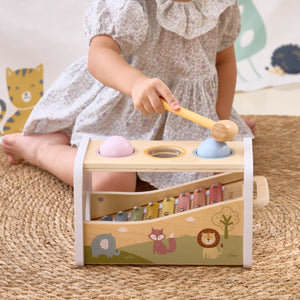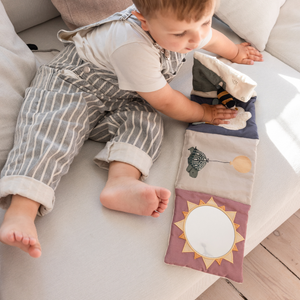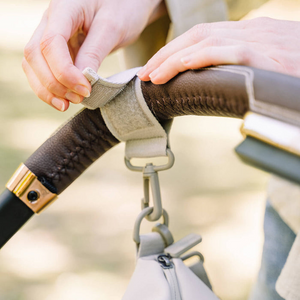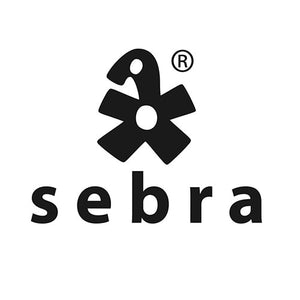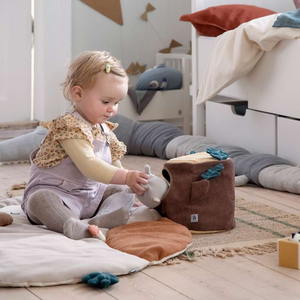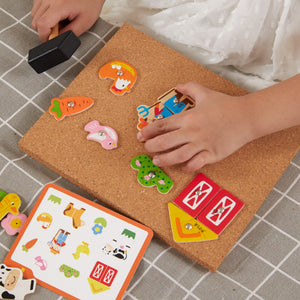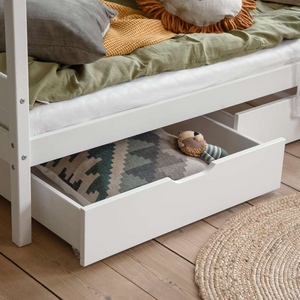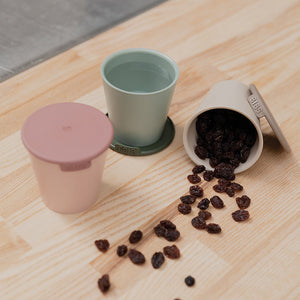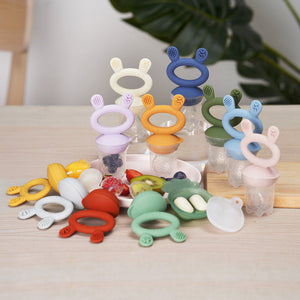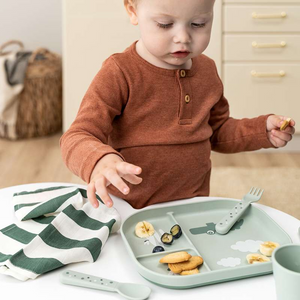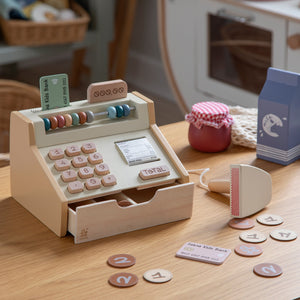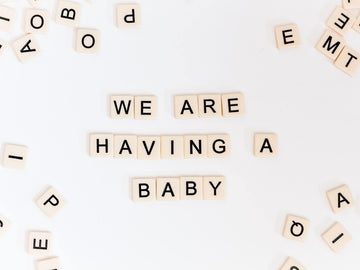
A Night in the Delivery Room
In the last story of the series, we meet Helle, who is a midwife and blogger at Midwife Lounge. Helle B. Nielsen has witnessed many births from the front row and shares in today’s post about a completely ordinary night in the delivery room, which offers a bit of everything.
11:15 PM
The clock shows 11:15 PM and I am on my way to work. One by one, the lights in the houses I cycle past are turning off.
The night peace has begun to settle in, and the streets are deserted, for as they used to say, it is only pickpockets, criminals, and midwives who are out at night.
Once I have changed and fastened my ID card to my white uniform, the tiredness I felt when I left home is completely gone. On my way up to the department, I wonder what the night will bring. A delivery room is an emergency department, and you never know what you’ll encounter.
I hope for a good birth tonight.
Baby is on the way out
In the pre-office, there is a board with names of both admitted women and those who have called to announce their arrival. Right now, there is only one woman on the board. The midwife has noted that Ida is a second-time mother and is now erased. This is midwife slang and means that the cervix has opened to the maximum of 10 cm. On my way down to the duty room, I can sense from the sounds coming through the door to the delivery room that Ida is probably well on her way to pushing her baby into the world.
The phone rings
There are two midwives and an assistant who have come in for the night shift. At home, another two midwives are on call, ready to come in if we get busy. My colleague is relieving the evening shift with Ida, and I take the phone from my pocket and go to check the birth log. I want to see if any of 'my own' pregnant women from my consultation have given birth. While I flip through the log, the phone rings.

It’s Pia calling. Pia is a first-time mother with early contractions and doubts about her water breaking.
We talk a bit and agree that she should come in for a check.
The amniotic fluid has broken
A quarter of an hour later, she arrives with her partner, Per. Pia is having contractions, but they are still coming at irregular intervals. When I examine her, she has just started to dilate. The cervix is barely 2 cm, and she has some of her cervical tissue left. However, with my fingers, I can feel hair on the baby’s head, and clear amniotic fluid is leaking out and running down my glove. There is no doubt that the amniotic fluid has broken. Since Pia’s contractions are still short, and the baby’s heartbeat is completely normal, I suggest that the couple go home and try to rest as best as they can.
Pia is a bit disappointed; she had hoped she would be further along in the process, but both she and Per feel comfortable going home and will call as soon as they need to come back.
The phone rings again
Then the phone rings again, it's Mie. 'I'm coming in now,' she says. Mie is expecting her 3rd child and feels that it’s starting to press. 'Should we send a transport out for you?' I ask, but Mie shouts that her husband has already started the car and they're on their way now! I go inside and prepare a delivery room, unpack the umbilical cord cutting set, and check that the warming lamp, oxygen, and suction for the baby are working.
I manage to skim Mie's journal to see how the pregnancy and previous births have progressed before Mie and her husband Bo come through the door. Bo must really have had his foot on the gas, and it unmistakably sounds like Mie has the urge to push. The assistant quickly helps her onto the bed. I think we’re likely to have a quick delivery, but when I examine Mie, her cervix is only 5-6 cm open. By feeling for the soft spots, the fontanelles on the baby’s head, I can tell that the little one is in what's popularly called a star-gazing position. Mie has the early sensation of the urge to push because the baby has turned with its face upward, causing the back of its head to press against the vagina.
At home, Mie has felt best lying on her knees and elbows on a towel under the warm shower and asks if it can be done here now that she doesn’t immediately need to give birth. In fact, that position is quite good for early pushing urges because the baby gets the chance to slide back a bit and perhaps rotate the right way with the back of its head upward. So yes, let's get Mie under the shower.
Bottom in the air and gasping breaths
The baby of Mie and Bo, however, has no intention of rotating the right way. For 3 hours, Mie alternates between walking around the room, hanging onto Bo’s neck, or lying with her bottom in the air and making gasping breaths to avoid pushing too hard before the cervix is ready.
We also try gently shaking Mie in a rebozo, which is a Mexican midwifery technique that can be used to help the baby rotate and descend.
Suddenly, Mie really has the urge to push. I ask her to relax her jaw and hands, as this also helps the pelvis to relax so the baby can pass. After a few pushes, I receive a small dark-haired girl who looks right up at me as her head slips out. 'Reach down and take your baby,' I say, and Mie leans forward a bit and carefully lifts the girl all the way out and up to her.
The placenta takes a little while to come. After 45 minutes, Mie receives acupuncture and reflexology, and then it is released. Midwives love to show off the placenta, this truly fantastic organ with the membrane where the baby has been, the fine vascular pattern called the tree of life, and the umbilical cord with its 3 vessels. Bo laughs awkwardly and says that this is definitely the last placenta he will ever see in his life.
Upon examining Mie, I can confirm that despite the baby having been in an irregular position and thus filling more than with normal rotation, there are no tears, and the bleeding is acceptable.
The assistant comes into the room with a tray of flags and toasted bread. After two frustrating breastfeeding attempts, Mie has chosen not to breastfeed this time. I read in her travel journal that the decision has been made after careful consideration and in consultation with her consulting midwife. Mie will receive medication to stop milk production, and the assistant goes out to warm a bottle for the girl. I let the little family have some peace before weighing, measuring, and conducting a baby examination.
Journal and far too much office work
Now it's time to write the journal and fill out papers. It's incomprehensible how much office work there is after a birth. It takes time, and in the meantime, things have gotten busy in the delivery room. My colleague, who took over for Ida late at night, has now received a woman showing signs of pregnancy poisoning, and on the board, I can see that there is a first-time mother with bleeding and far too early contractions on her way in.
In both cases, a doctor must be called to the delivery room.
The two on-call nurses have also been called in, so thankfully it gives a little peace to finish Mie's labor.
Mie and Bo are offered accommodation at the department's maternity clinic, so they don't have to go out into the night with the baby, but they would like to go home so the new sister can be introduced to her siblings when they wake up.
Early in the morning, a couple of hours before the shift change, Pia calls again; the contractions have intensified, and she wants to come in. When she arrives, I can see that she is now in active labor with regular contractions and the cervix opened 4 cm. On the way down to the delivery room, I ask if there are any special wishes for the birth, maybe a room with a birthing pool? Pia has a contraction and cannot answer, but Per says that they have talked about a water birth, but Pia now prefers the epidural they heard about in childbirth preparation.

Before the anesthesiologist can administer an epidural block, a CTG must be performed, an ultrasound measurement of the baby's heartbeat. Pia is tense, so I sit next to her and help her regain control of her breathing. Per is nervous and needs to know that everything is as it should be and what will happen next. We talk about what I expect will happen and I show him what he can do to help Pia. Per wants to go outside for a breath of fresh morning air, and I ask him to bring back a cup of coffee. Coffee will do wonders now in the morning.
Per goes outside for a bit and comes back with juice for Pia and two plastic cups of coffee.
Having your first child is often a long and demanding process, where calm, trust, and safety are so important for the woman to produce plenty of the good love hormone oxytocin. Oxytocin is used by the body to create some good, effective contractions and to bond mother and child. Creating calm and safety in the delivery room is one of the midwife's most important tasks. It is completely natural for the mother and father to be nervous and excited, but if it turns into outright anxiety and unrest, it can hinder the normal progress of labor, increase the risk of interventions, and make it difficult to give birth without medical pain relief.
The clock has struck 7:30, and I say goodbye to Pia and Per and wish them a happy birth day.
In the on-call room, the fresh day nurses are waiting for the report. I give a report about Pia and tell them that she is a first-time mother with good frequent contractions, that she wanted to give birth in water, but now leans more towards an epidural. I also mention that it is my feeling that especially Per feels best when he receives information about what is going to happen. A midwife stands up and goes in to see Pia and Per.
It is aimed that women in active labor have a midwife continuously with them in the room.
I change clothes and cycle home in the misty morning sun. The experiences of the night are reflected over a cup of coffee before I pull down the blackout curtains and go to bed. Despite plenty of midwife coffee, I sleep absolutely wonderfully!
On the next shift, I will check the protocol to see how things went with Pia. I can see she received her epidural and gave birth to a nice little boy late in the afternoon.









